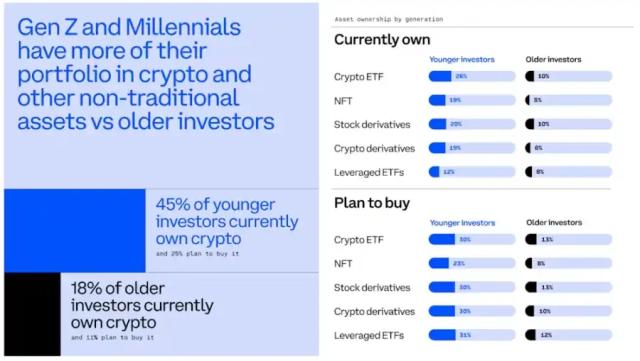Original Title: 《MeMe Learning Notes》
Author: He Yi, Co-founder of Binance
I. Subculture: From the Margins to the Stage
Expression is a common human trait. A good meme can cross cultural boundaries and bring a smile. When collective self-identity, emotions, and subjective intentions overlap, they form unique values, semantics, and expressions. For example, the Zanaijia family in the QQ era, social shaking in the mobile video era, or the "Sanhe God" on the margins of the post-industrial era, creating unique subcultures. Though I didn't grow up in Western culture, I believe every culture has groups that resonate deeply. The subcultures I mentioned are niche and outdated, not good meme expressions, but they represent extreme historical forms that are vivid and refreshing.
Essentially, no circle is truly superior. Hippies in meditation classes aren't necessarily more sophisticated than story readers, and those who love reincarnation and Star Wars aren't more aesthetic than Young and Dangerous fans. The more niche the aesthetic, the less commonality. Moreover, our generation has spanned agricultural, industrial, and information revolutions, and crashed into AI. Chaos is the norm, and all authorities are dissolved. Every idol is just ordinary. Meme is a silent thunderbolt, the ultimate expression of crowds, a subculture's impact on mainstream culture. Being photoshopped or issued as a token is part of deconstruction. I don't consider myself worthy of being the center of MEME.
Similarly, chasing trending topics on Twitter or in CZ's or my replies isn't the optimal path to discovering or creating MEME. MEME is in your heart.
II. Who Can Surpass Doge?
There's only one Doge. In the first Bitcoin bull market of 2013, among countless Bitcoin clone projects, they both mocked Bitcoin and self-mocked, playful yet passionate. Developers abandoned the project, but the community had its own vitality. The community independently added an important stroke to crypto culture. Jiang En in the Chinese crypto circle spread Dogecoin worldwide, pioneering a unique crypto track: "Evangelize the industry, reward first". Back then, BBS comments were: "You seem nice, here's 10,000 Doge", leaving recipients bewildered about the value. In the crypto industry's development, each community has its "Jiang En". Later, Elon's love for Doge brought subculture to the mainstream. Now, Doge is more than just a dog.
MEME is an attention economy, but not just attention. If it's like Twitter's daily trending, everything is destined to be fleeting. Great MEME isn't from celebrities' witty remarks - that's insufficient. It's worship of those in power (whether politicians or entrepreneurs), and that's not cool.
On the other hand, those opposing for the sake of opposition often have extreme views. Those shouting decentralization are often extremely centralized. Maintain critical thinking and distinguish truth from falsehood.
Imagine someone in your group telling you to buy a trending topic that will cool down tomorrow. If these attentions can become a product, a belief, a religion, then perhaps the next Doge might emerge. Who says it's impossible? Everything is possible.
III. Is Long-termism Outdated?
I don't trade, but hold long-term, following value investment logic. Similarly, in business, I embrace long-termism - building a clock or a garden.
Binance is just infrastructure, creating a stage where project parties and investors might win-win or lose-win. This depends on ability, willpower, and judgment. Top entrepreneurs are rare. Long-termism requires DYOR and knowing when to stop. It's not that long-termism is outdated - perhaps you've chosen the wrong long-term object.
When blockchain winds blow, investors pour money into projects. Entrepreneurs claim their projects are worth $100M, $1B, or even $100B. Everything can be tokenized. Price and value may deviate, but over cycles, they'll converge.
The 2017 market was smaller than now, the 2021 DeFi summer's funding less than current levels. We see more excellent entrepreneurs entering Web3. Industry scale grows, but confidence shrinks. Many users ask why project valuations can't return to ICO levels. We can't return to the past, but we're trying - letting users vote tokens up or down, attempting Web3 wallet IDOs, allowing projects low-threshold, low-market-cap issuance with real user profits, which is better than buying fake data.
Whether MEME, AI, games, DeFi, social or RWA, may we have beer in our cups after each bubble bursts. Fortunately, history repeats, and successors will realize predecessors' claims about technology changing the world.
I hear many serious projects want to give up. Hey! Friend, new trends always emerge, but the world moves by a few. Instead of chasing trends, become the trend.
IV. Investment Advice Friends Always Ask
All my assets are in crypto, and a long-term holding style isn't suitable for most people, but here's one reference: earn certain money.
1. Earn cyclical money - roughly judge economic cycles and bull/bear markets. Selling in bull markets, buying in bear markets is basic
2. Any asset category follows the head principle
3. Recommend at least 20% in crypto. Land was agricultural civilization's asset, minerals were industrial era's hard currency, information era's top assets are top internet company stocks and top crypto with suction effect
4. Some friends say fundamentally good crypto lacks volatility. Without leverage or trading high-risk tokens, there's no opportunity. Recommend not exceeding 10% of disposable assets
5. Most principles are already understood, not needing more explanation. Execution is hard, like losing weight
Wish everyone knows and achieves.





